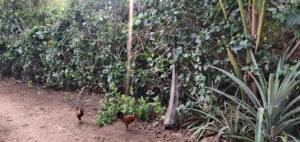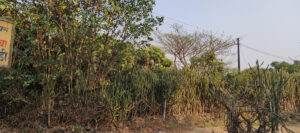Shelters and buildings are a necessity for human life on this planet. Since industrialization, humans have been constantly building new structures. Unfortunately, this development has led to the detriment of our beautiful Earth.
Most of the time, when new developments are built, the existing flora and fauna are cut down. After that, people typically do not restore the environment. They actually do the opposite by creating manufactured non-native lawns that require large amounts of chemicals to sustain.
Not only that, but most modern building materials are full of toxic chemicals. These are terrible for the Earth and for our health. Today, the majority of buildings use some combination of cement, plaster, bricks, wood, and drywall.
Working with these things cause health damage to the builders and to the occupants. Much of these extra unused items are disposed of directly into the building site.
All of these materials have a negative impact on our earth. Cement, for example, requires high amounts of water and energy to make.
Our coral reefs are being destroyed because many companies grind coral to add into the cement powder. This is only one way that non-natural buildings are killing our planet.
Sadly, the list of negative impacts is very long. On the other hand, natural materials are actually good for your health. Earthen buildings are composed of things like wood, stone, and clay- all which have a positive impact on us.
Building with earth is another way to build that is 100% non-toxic and earth friendly!

When I say Earth, I am referring to the clay that is in our soils. Yes, you heard me right! You can use the clay underneath your feet to build the carbon-neutral home of your dreams.
In fact, this is an ancient building technique that has been lost in our modern, fast-paced world. The first human settlements were built using clay over 10,000 years ago.
There are many different ways you can use Earth to build something. In South America and the Middle East, they have been using Adobe bricks to build their houses for centuries.
Adobe is the process of making clay bricks and using that to build your house. In many areas of Mexico and New Mexico you can still find tons of adobe buildings.
When you enter into these natural buildings, there is no doubt a different feeling compared to entering into a conventional building.
Humans are animals, we are meant to be living amongst nature. However, we have continued to separate ourselves from nature spending most of our time living between 4 concrete walls staring at screens.
There is something about a natural building that feels right to the soul. You feel comfortable, your eyes are not straining, and the air is clean. Even better is that anyone can do it!
You do not have to worry about getting dangerous toxins on your skin or in your lungs.
On top of all that, cob buildings are earthquake proof, fireproof, and bug proof.
Keep reading to learn more about the versatility and benefits of Earthen Building!
Cob – Anyone Can Make It!
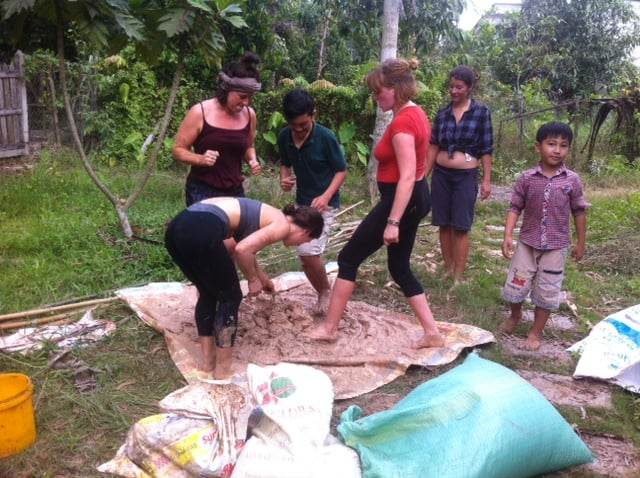
Cob is a mixture of clay, sand, and straw. When combined, it becomes a 100% sustainable and strong building material. It doesn’t even require electricity to make!
It is typically mixed with your feet. Making cob is a fun community event. People of all ages can do it and by the end you have great material to build a whole house!
Another great thing is that you can use the clay directly from your land. This means you do not require any outside transportation for materials. All you need is manpower and wheelbarrows.
Also, since the majority of your material is coming from your land, it is significantly cheaper to build with Earth compared to the conventional way.
It is possible to build a cob home for $5,000! And if you want to build something really small it could cost you as low as $500.
The average cost of a new, conventional construction is at least $100,000! People will spend their whole life working to pay that debt off.
With cob, you can spend quality time building your house with the community and have a finished house with no debt!
Round Buildings Align More with Nature

Cob is a very malleable material. You can shape it any way that your hands can imagine.
This is already a huge advantage because conventional materials are cut to be only in straight, rectilinear shapes. With a cob house, you can create a round shape.
Round shapes are more natural. In fact, it is rare to find anything in nature that is perfectly straight. Even milled wood will eventually warp and curve.
By making a natural building, you are able to create buildings that fit in line with nature and closer to your actual spatial needs.
In square buildings, there is a lot of dead space. These sharp corners are places that create high pressure and suck cool air into your home. A round shape circumvents these cold air pockets, keeping your house warmer.
Also, the environmental cost of these “straight” buildings is high. So much energy is put into the harvesting and manipulation of already perfect building materials.
Think about a tree trunk that is round and never perfectly straight. Yet wood mills spend countless hours, gasoline, water, and electricity to cut these trees down and then process them into flat boards to be used for buildings.
Also, we have to remember the environmental impact. According to Ianto Evan’s book The Hand Sculpted house, “75% of all trees in North America are used in construction.”
In natural buildings, we use the whole tree trunk as the posts for our cob houses. Not only does this make a lot more sense for the environment, it creates a very beautiful and warm look to your house.
It also is stronger than a straight piece of wood because the natural curves of the wood provide support from multiple angles. In comparison, a straight piece of wood needs to be supported in many other ways.
Cob is a Reusable Material
One of the other environmentally beneficial aspects of using cob to build is that it is entirely reusable. If you decide to break down a wall, you can rehydrate the mix and use it again for another building.
This is not true for cement, which can only be used once and then it’s done. Unfortunately, this has left tons of construction waste all around the world. So many buildings are left abandoned.
There is nowhere for this waste to go because cement is not biodegradable. In some cases, you are able to recycle cement, but again, this requires high amounts of energy to process.
With cob, you simply have to put water on it and it can be used again!
Earthen buildings as a Thermal Mass
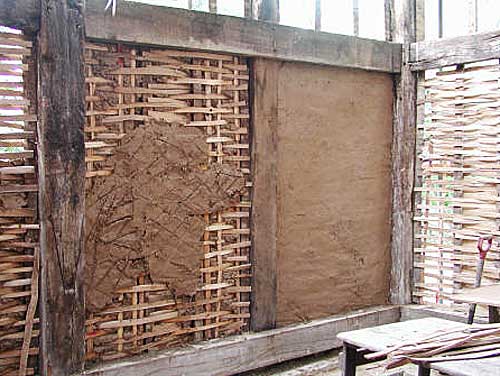
Heat moves through an earthen mass at about 1 inch per hour. During the day it will slow down and absorb the sun and release the heat at night when it is cooler out. This helps create a comfortable environment at all times of the day.
Cob is used for passive solar designs because it acts as a heat storage. When cob is used for your floors, it can keep you warm by storing the heat from the day. Cob floors will suck the heat from the room and can hold it for weeks at a time!
Types of Earthen Building Techniques
There are various ways to use Earth to build a structure. The specific technique that you choose depends on your climate, resources available, and personal aesthetic preference.
We will be writing a more detailed article about each technique. But for today, I will mention some of the main kinds. These are Adobe, Straw Bale, Wattle/ Daub, Earthbag, and Rammed Earth.
Certain building styles such as strawbale, have a high ‘R’ value. In fact, a straw bale has an R value of 30 which is the same as most heavy duty fiberglass insulation materials. This technique is more suitable for a cold climate like Michigan.
Wattle and daub have very thin walls and work well in tropical climates and areas of high heat. This is done by weaving the walls with some kind of bendable wood like bamboo or willow. Cob is plastered on top of the weaving pattern.
Earthbag is a method of filling bags with earth that’s tamped or compressed, stacking the bags and then cobbing around it. It is considered one of the most earthquake-proof forms of earthen building.
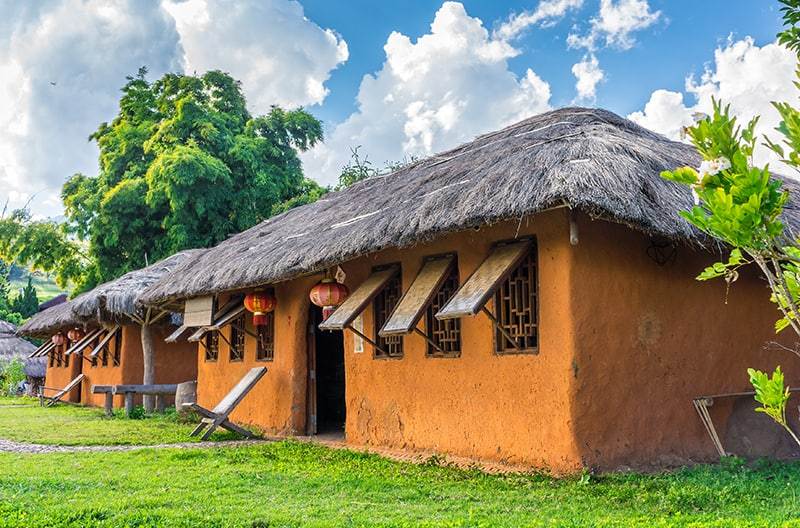
Rammed Earth is a technique of applying small layers of earth at a time and then tamping, or “ramming” the layers together in sections
Adobe is when you use a mold to make a lot of earthen bricks then connect them with a clay plaster. This is very commonly found in Mexico.
Regardless of which method you choose, building a natural home with Earth is a rewarding experience and one you will never regret. It benefits you, the planet, and the greater global community.
If you are interested in learning more about a specific technique, check out our other articles where I will be providing a basic tutorial for each method!

